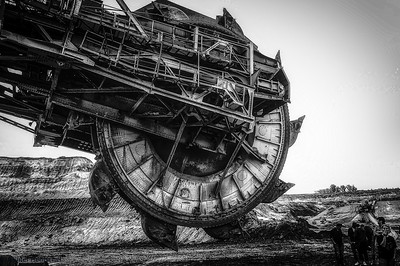Why Hardware Is Hard For Startups And What to Do About It
 Software may be eating the world, but the hardware elements of a startup’s work define when lunch is served.
Software may be eating the world, but the hardware elements of a startup’s work define when lunch is served.
Hardware takes longer than software. With hardware, after the product and its parts are designed, companies are vetted/selected to make the parts; contracts are signed to make the parts; the parts are made; the parts are shipped; the parts are received; the parts are inspected; and the parts are put in their locators. Then, the manufacturing process is defined, the manufacturing tooling is designed and purchased; the manufacturing documentation is created; the final test system is designed and built; and the parts are assembled into the product. Then, the product is run through final test and tested for robustness. After it’s learned the manufacturing process created too much variation and the insufficient robustness manifests, the manufacturing process and its documentation are changed to reduce variation; the parts that failed are redesigned, purchased, made, shipped, and received; and the next iteration of the product is built and tested. This process is repeated until the product is robust and the manufacturing process is repeatable. This is why hardware takes longer than software.
If the software is done but the hardware isn’t, the software must wait for the hardware and the customer must wait for the finished product. To get the hardware done faster, recognize that redesign loops are part of the game and invest in the capability to iterate quickly. Line up the suppliers to make parts quickly; keep utilization low on the support resources so they can jump on the work when it arises (think fire stations who can respond quickly when there’s a fire); and avoid part-time resources on the critical path. There may be other things to focus on, but only after taking care of these three.
Software may be eating the world, but the hardware elements of a startup’s work govern the cost of getting to the dinner table.
Hardware costs more to make than software. Hardware is made of steel, aluminum, injection molded plastics, and rare earth elements, all of which cost money. And because startups do things that have not been done before, the materials can be special (costly). And unlike software, the marginal cost of an incremental unit is non-zero. With hardware, if you want to make another one you’ve got to buy more of the materials; you have to pay people to make it; you have to buy/build the manufacturing system; you have to buy the measurement systems and engineering infrastructure; and you have to pay people to break-test-fix the product until it’s ready.
What’s a startup to do?
To do hardware faster, focus on learning. And to do hardware more cost-effectively, focus on learning.
For both time and money, learning efficiency is a good starting point. The most efficient learning is the learning you don’t have to do, so be ruthless in how you decide what you DON’T learn. Where possible, declare all but the most vital problems as annoyances and save them for later. (Annoyances don’t require learning.) This will concentrate your precious resources on fewer problems, improve your learning rate, and keep costs to a minimum.
Here’s a good test to decide if the learning is worth learning. Ask yourself “If we accomplish this learning objective, how will the customer benefit?” If there is low or no customer benefit, say no to the learning objective. If there is medium customer benefit, say no to the learning objective. If there is significant customer benefit, do the learning.
For those learning objectives that make it through the gauntlet, learn what you need to learn, but no more. To do this, create a formal learning objective: “We want to learn [enter learning objective here].” With learning objectives, the tighter the better. And define the criteria for decision making: “If the result of the test is [define objective measurement here], we will decide [enter decision here].” With decision criteria, the clearer the better.
Learn effectively, not elegantly. Be bold, rough, and crude with how you learn. Design tests that take advantage of the resources you have on hand so you can learn quickly. If you can run a crude test in one hour and the perfect test will take a week, run three crude tests and be done by the end of the day.
Learn with less confidence and more judgment. If a wrong decision can be overcome quickly and with low cost, be less confident and use more judgment.
Whether driven by hardware, software, or the integration of both, project completion is governed by the critical path. And with longer time constants, it’s more likely that the hardware defines the critical path. The total cost of the project is the sum of the three costs: software, hardware, and integration. And because hardware requires expensive materials, factories, engineering labs, people to run the tests, and people to make the products, hardware is likely a large percentage of the project costs.
Image credit — Günter Hentschel
 Mike Shipulski
Mike Shipulski